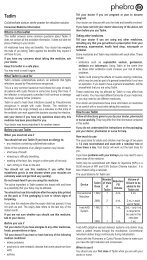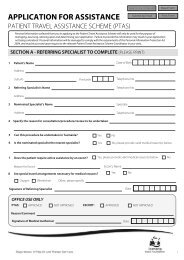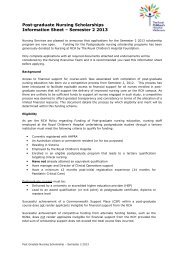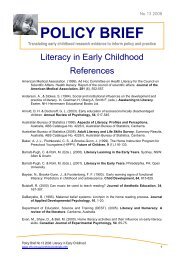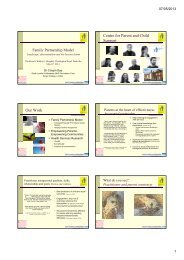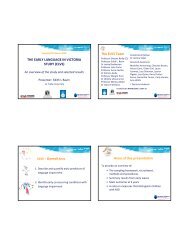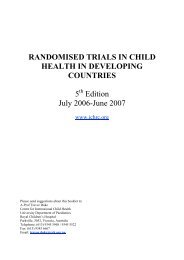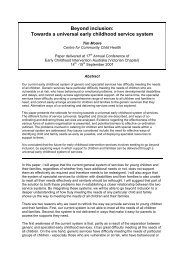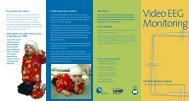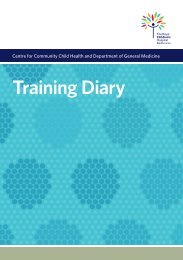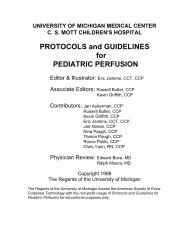Understanding Brachial Plexus Palsy - The Royal Children's Hospital
Understanding Brachial Plexus Palsy - The Royal Children's Hospital
Understanding Brachial Plexus Palsy - The Royal Children's Hospital
Create successful ePaper yourself
Turn your PDF publications into a flip-book with our unique Google optimized e-Paper software.
Surgery for brachial plexus injuries<br />
Your child will be regularly monitored by a<br />
physiotherapist to record any progress in muscle<br />
strength. Surgery may be chosen when adequate<br />
muscle function has not been recovered by nine<br />
months of age. <strong>The</strong> decision to operate is often<br />
made earlier if there is little recovery by three to four<br />
months of age. Primary surgical treatment includes<br />
fibres of nerve may grow through the scar producing<br />
some movement in the arm. Children selected for surgery<br />
are those who are not expected to continue to improve to<br />
a worthwhile extent. Surgery is recommended when it is<br />
believed that the chances of achieving further recovery are<br />
better with removal of the neuroma and nerve grafting<br />
than waiting for spontaneous nerve regrowth.<br />
removing scar tissue and nerve grafting. Unimportant<br />
sensory nerves are removed from the legs and placed<br />
between the nerve ends using microsurgery. (Fig. 7)<br />
Accessory nerve<br />
Nerve grafts (x5)<br />
Nerve transfer<br />
Suprascapular nerve<br />
Even those children who have a very severe brachial<br />
plexus injury will show some recovery by six to nine<br />
months. Small fibres of nerve may be intact or small<br />
Figure 7. Typical surgical repair of brachial plexus injury.<br />
9




